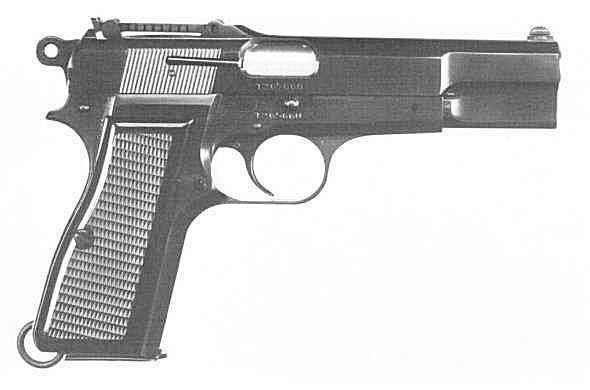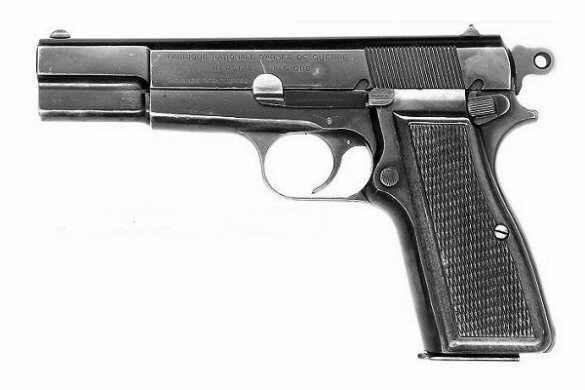During WWII, many Browning 9mm GP35 pistols were made in Canada by John Inglis & Co of Toronto, and despatched to Nationalist China. During their victory in the Chinese civil war, the CCF captured many of them, and used them during the first year of the Korean War.
The pistol was developed by Fabrique Nationale in 1935 to John Browning's design, and represents an improvement over earlier models such as the M1911 Colt 45. The major difference lies in the disposal of the Colt's hinged link which effects barrel/slide unlocking on the recoil, substituting a shaped cam on the underside of the barrel, which operates against a fixed stud in the frame to do the same job. In addition it has a more comfortable trigger than the Colt stirrup-type. When pressed it rotates a trigger lever forward, rotating the sear lever which acts upon the sear arm, causing it to swivel and release the hammer. Stripping is also somewhat easier, and all early Belgian models, and the Chinese Canadian models, have a slot in the butt which permits fitting of a holster stock.
The GP35 greatest military asset is its unusual magazine capacity -- 13 rounds in a double row. The consequently bulky butt grip, together with an arched lower section of the handle section of the receiver gives the pistol a better than usual instinctive pointing quality. It is easily held and is a most handy weapon in action.



